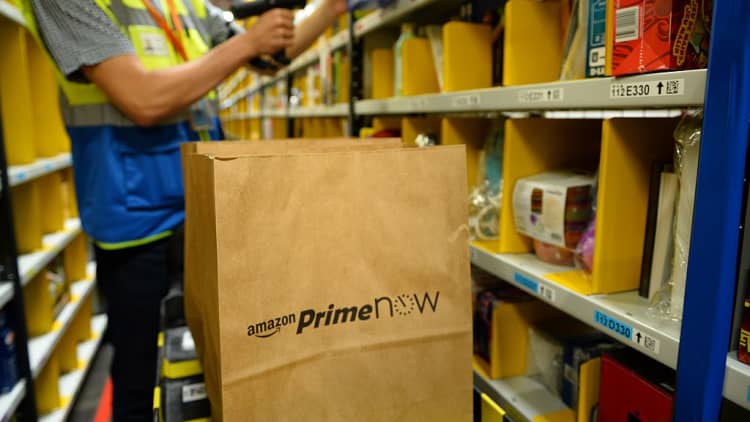Amazon is quietly expanding Prime Now, its free 2-hour delivery service. After originally launching in one zip code in New York City back in 2014, it's now available in more than 45 cities in eight countries. This year alone, it's added 14 more cities.
But don't feel bad if you haven't heard about it yet. Amazon may be keeping it under wraps as it ramps up its offerings and perfects its fastest delivery method yet.
After all, you won't find the service on the Amazon mobile app — you'll have to give up some screen real estate for its "Prime Now" app.
We headed inside one of Amazon's Prime Now hubs in the company's hometown, Seattle, to see for ourselves what free 2-hour delivery looks like.
What we found was surprising efficiency, a whole lot of randomness and some hints as to what Seattle consumers are shopping for. And, possibility, Amazon's vision for the future of ecommerce and retail.
The Prime Now service offers a smaller selection of mostly household items available on Amazon.com to Prime members with a free 2-hour delivery window. It's no small feat considering there are tens of thousands of products available, as well as selections from local restaurants and stores. There's even ice cream and chilled wine on offer.
Unlike Amazon.com's fulfillment centers, which are over a million square feet and house millions of items, Prime Now hubs are closer to city centers and about 30 to 50 thousand square feet on average. Humans — not robots — manually pick out the items in an order from rows of shelving and bins, using internal Amazon systems that have cataloged where every item is stored. Amazon can also tells a "picker" the most efficient route to getting all those items as quickly as possible.
When we visited the hub, around noon, there were only a few orders to fill and everything seemed to run smoothly. We didn't get to see how the hub handled a rush of orders or bottlenecks, which typically happen around 6 or 7pm when customers order items or groceries to arrive as they get home.
Correction: Amazon Prime Now hubs are 30 to 50 thousand square feet on average.



